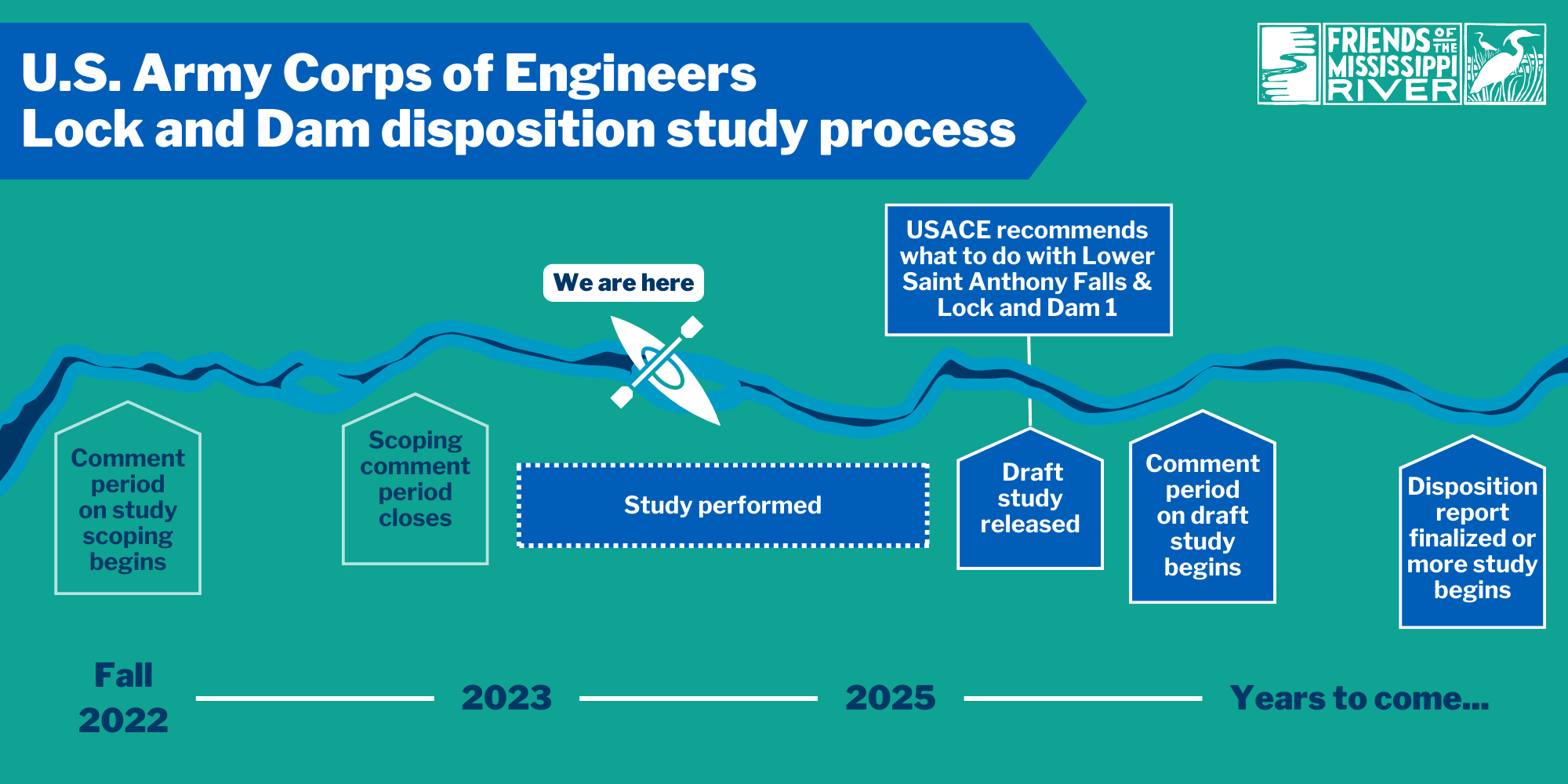Army Corps study on the future of two metro locks and dams enters new phase

The Corps is exploring what to do with Lower St. Anthony Falls lock and dam (top) and Lock and Dam 1, or the Ford dam (bottom), now that these structures no longer serve their intended purpose. (Photos by Mike Durenberger, David Wheaton)
What will the U.S. Army Corps of Engineers focus on in their multi-year study about the future of the Lower St. Anthony Falls Lock and Dam and Lock and Dam 1 in Minneapolis and St. Paul? The release of the Corps scoping documents gives us a picture of what questions they'll investigate — and what could go unanswered.
Another milestone in the process
Last fall, the U.S. Army Corps of Engineers, which owns the structures, began its disposition study to consider future changes to the locks and dams, including potential dam removal. (Learn more about the disposition study.)
The first step in the study is called scoping, which identifies what factors should be considered in the decision-making process. After a community engagement period in late 2022 (during which FMR River Guardians submitted more than 170 comments), the Corps has released the scope for their study.
This scoping document outlines what the Corps will be studying. Topics include everything from the composition of river sediment, to the historical significance of the structures, to impacts on water and air quality.
What's missing from the planned study?
The study scope is broad but somewhat shallow. The Corps won't be gathering or analyzing new data about many of the significant impacts our community needs to understand to make a decision about the future of the locks and dams. In many aspects, their study will be too limited to answer our big questions, particularly around dam removal.
This isn't surprising. The ultimate goal of an Army Corps disposition study is to determine what makes the most sense for the Corps, and particularly for the Corps' budget. While environmental outcomes and community input are considered, they don't tend to be dominant factors.
FMR and our partners have already been working with researchers and local agency experts to design research projects that will supplement the Corps' work. We hope to bring studies about issues like sediment transport, infrastructure impacts and recreational changes to fruition to help all of us decide whether dam removal or another future for the locks and dams really makes sense.
We'll also continue our engagement work to learn what community members (particularly Dakota and other Indigenous neighbors) want to see for the future of the Mississippi River.
Looking ahead

We'll update our advocates on the study's progress and let you know when there's another chance to weigh in on the future of the river.
The Corps' disposition study is scheduled to be completed in spring 2025. At that time, the Corps will recommend a future for the locks and dams. Any changes to the current use or owners will require Congressional approval.
Stay tuned for future events and updates about the disposition study. You can sign up as a River Guardian to make sure you don't miss any news.
Become a River Guardian
Sign up and we'll email you when important river issues arise. We make it quick and easy to contact decision-makers. River Guardians are also invited to special social hours and other events about legislative and metro river corridor issues.